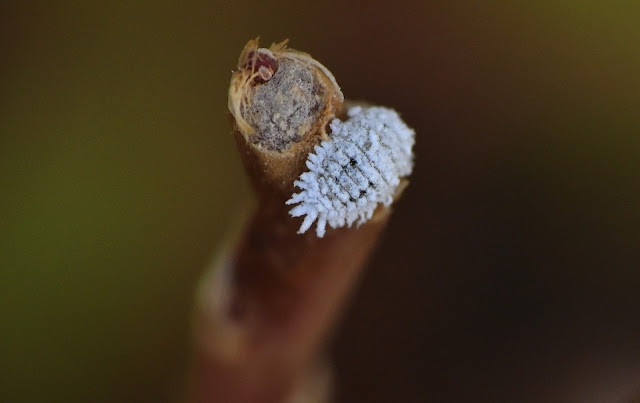Your pretty little healthy succulents may no longer remain pretty if the deadly mealy bugs attack them. Mealy bug attacks are one of the most common issues that succulents face, and succulent owners must strive hard to make the succulent free of them. Mealy bug attacks can be fatal for almost all types of succulents if not treated with care within time. Mealybugs are parasitical pests that can attack both indoor and outdoor plants.
What are Mealy Bugs?
The scientific name of mealy bugs is Pseudococcus longispinus. It is small and white with a long tail and multiple tentacles or antennas, which are its arms. The body of mealybugs appears white and fluffy, and the top layer of their body is white powdery. The waxy body coating prevents the mealy bugs from getting wet and thus makes them a string and resentful parasite. This is the same reason why most water-based parasites don’t work on mealy bugs. Since they are too small, mealy bugs can easily hide in the plants' nooks and corners or leaves, making them difficult to spit and remove. Their size ranges from 3mm to 5 mm. Mealy Bugs thrive the best in high humidity conditions with moderate temperature. They reproduce quite fast, with eggs hatching in every 2-3 weeks. Extremely hot and dry weather reduces their reproduction rate. Mealy bug treatment must be done every 2-3 weeks to keep their numbers under control. Mealybugs on plants are of two basic types - the above-ground mealy bugs we are talking about in this article and another type called the “rooty mealy bugs” that targets the roots.Treating Mealybugs on Succulents
Let us give a quick look at how to treat mealy bugs that appear on indoor plants. The first step for mealy bug treatment is inspection and identification. You have to closely inspect the plants regularly and spot any mealy bugs if they are present. Once you have identified a mealy bug infection, follow these steps:Isolation
Isolate the infected plant from the rest because mealy bug infections spread rapidly and may soon infect all the other healthy plants.Applying Isopropyl Alcohol
Now it is time to apply isopropyl alcohol to the infected plants. In this case, you can also apply Rubbing alcohol. FYI, rubbing alcohol is the same as isopropyl alcohol, just a little dilute. Pure isopropyl alcohol is 100% IPA whereas rubbing alcohol is 70% IPA. You can also buy raw IPA and then dilute it at home. Once you have prepared the alcohol solution, it is time to follow a three-step regime for mitigating mealy bugs infection:- The first step is to target adult mealy bugs. Dip a cotton ball in Isopropyl alcohol and rub the leaves with the same. You will soon see the mealy bigs on the leaves change colour to orange-brown and fall off from the leaves. This is an instant solution. You won’t even have to wait much to observe the results.
- If the infection has not yet spread too much and is in the mild stage, instead of rubbing every leaf with alcohol (which consumes more time and energy), you can mix water and IPA in a spray bottle along with 1 or 2 drops of liquid dishwashing soap and spray the solution on the infected leaves. Spray everywhere above the ground, even on the roots and branches.
Treating the Base and Roots
If the roots of your plant, specifically the basal part, is more infected with mealy big attacks, hydrogen peroxide can be a great solution. You must mix a quarter cup of hydrogen peroxide (strength 3%) with 4 cups of water and prepare a uniform solution. Spray the solution with the roots and on the soil thoroughly. Leave the mixture as it is for some time. After a few minutes, once the bubbling of hydrogen peroxide has completely stopped, rinse the plant with water. This will greatly help treat plant bases and roots infected with Mealybugs.

Comments
Post a Comment